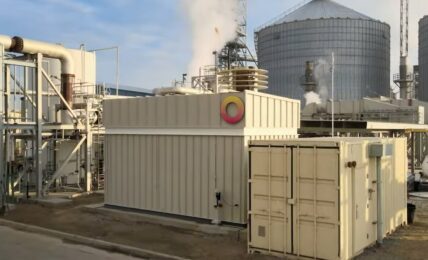Over $9 trillion in investment will be needed through 2050 to scale green hydrogen production to levels required to support global decarbonization and climate goals, according to a new report by professional services firm Deloitte, creating significant investment opportunities across multiple regions and sectors over the coming decades.
The report, “Green hydrogen: Energizing the path to net zero,” explores the investment, market growth and decarbonization opportunities from the development of a low-carbon clean hydrogen economy over the coming decades, envisioning revenue reaching $1.4 trillion and cumulative carbon emissions reductions of up to 85 gigatons (GT) by 2050.
According to the report, hydrogen can play a major role in the global energy transition from fossil fuels to low carbon energy sources required to limit global warming to 1.5 °C, satisfying between 15% – 30% of future energy needs. While the bulk of clean energy development is currently focused on electrification through renewables such as solar and wind, hydrogen can address hard-to-abate activities less suitable to electrification solutions, such as heavy industry and transport. Additionally, hydrogen can be used to add flexibility and stability to solar and wind-based power systems.
Global hydrogen production capacity is currently around 94 million tons, although the vast majority is produced through natural gas reforming and coal gasification, which are highly carbon intensive, generating over 1 GT of CO2 emissions per year. The development of clean hydrogen capacity will require massive investments in areas including infrastructure, electrolysis, and transport. The Deloitte report forecasts clean hydrogen capacity in 2050 to be primarily focused on green hydrogen, which uses a renewable energy-powered electrolysis process to extract hydrogen from water, with blue hydrogen, produced by converting natural gas into hydrogen and CO₂, which is then captured and permanently stored, serving as a transition technology, and representing around 15% of production in 2050.
The report envisions the clean hydrogen market growing to 172 million tons in 2030, and then scaling further to nearly 600 million tons in 2050. Initial demand is anticipated to be focused in sectors that already employ industrial hydrogen uses, such as fertilizer production, with long-term demand driven by heavy industry, such as iron and steel, chemicals, cement, at 42% of demand, and transportation, including aviation, shipping and heavy road transport at 36%.
In order to reach these production levels, Deloitte estimates required investment reaching $9.4 trillion through 2050. The report details the key areas of investment, which are focused primarily on green hydrogen production, including $4.6 trillion for the required solar ($3.1 trillion) and wind ($1.5 trillion) power generation deployment, and $2.6 trillion for electrolyzers. Approximately $1.7 trillion of investment is focused on conversion and transport assets, including $1 trillion for pipeline transport, $500 billion for conversion and reconversion units, and $100 billion for the construction of maritime infrastructure. The report also envisions around $600 billion of capex for blue hydrogen, concentrated in the first half of the forecast period.
Prof. Dr. Bernhard Lorentz, founding chair of the Deloitte Center for Sustainable Progress (DCSP) and Deloitte Global Consulting Sustainability & Climate Strategy leader, said:
“Money is not the problem—though the average annual investment over the time period is significantly less than the US$417 billion that was spent on oil and gas production in 2022 globally. It’s just a question of redirecting the investment to clean energy sources, and Deloitte sees that the global finance industry has an increasing appetite for major investments.”
The report also points to significant opportunities from the development of clean hydrogen for developing countries, which Deloitte forecasts could account for nearly 70% of the $1.4 trillion market by 2050, and support up to 1.5 million jobs per year. Global hydrogen export revenues are anticipated to reach more than $280 billion annually, with the largest share, around $110 billion, represented by North Africa.
The report also indicates the need for government support to help scale up the clean hydrogen economy, until economies of scale and carbon pricing enable green hydrogen to catch up in terms of cost. Deloitte forecasts a breakeven point for green hydrogen in 2030 for ammonia, , 2035 for gaseous hydrogen, 2045 for methanol and 2050 for sustainable aviation fuel. In order to support the development of a green hydrogen supply chain, the report sets out a series of policy-focused recommendations, including the establishment of national hydrogen strategies and targets to provide visibility and credibility to enable private investment, certification of clean hydrogen, carbon pricing to price in the externalities of more emissions-intensive energy sources, and the use long-term contract to reduce supplier risk, among others.
Jennifer Steinmann, Deloitte Global Sustainability & Climate practice leader, said:
“If policymakers and business leaders provide decisive support of the market, green hydrogen can outcompete carbon-intensive hydrogen production in less than 10 years. Reducing our carbon emissions and the physical and economic damages from unmitigated climate change is a massive win for nations and businesses alike.”
The post Deloitte Forecasts Over $9 Trillion Investment in Clean Hydrogen to Hit Global Climate Goals first appeared on ESG Today.
The post Deloitte Forecasts Over $9 Trillion Investment in Clean Hydrogen to Hit Global Climate Goals appeared first on ESG Today.



